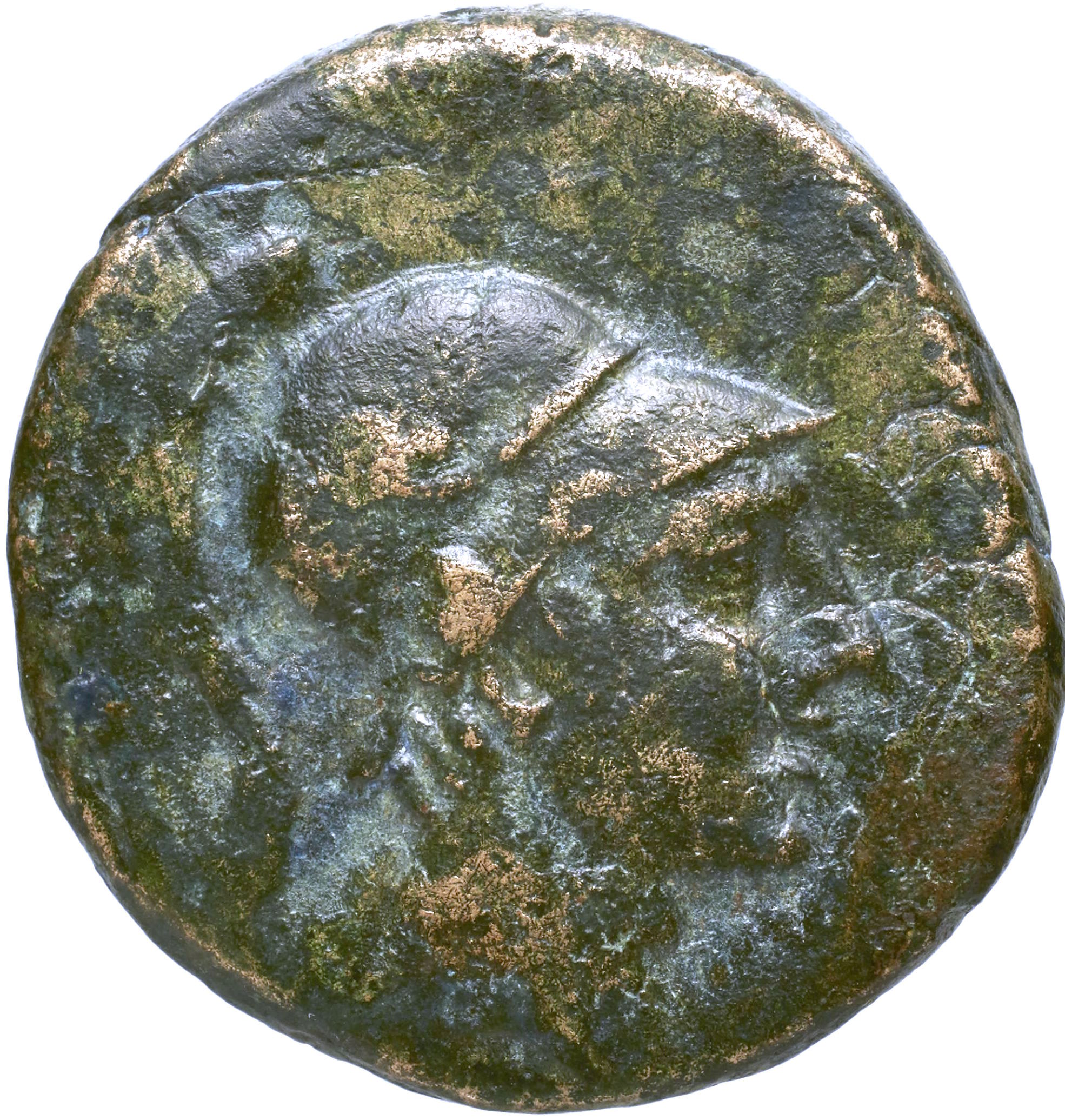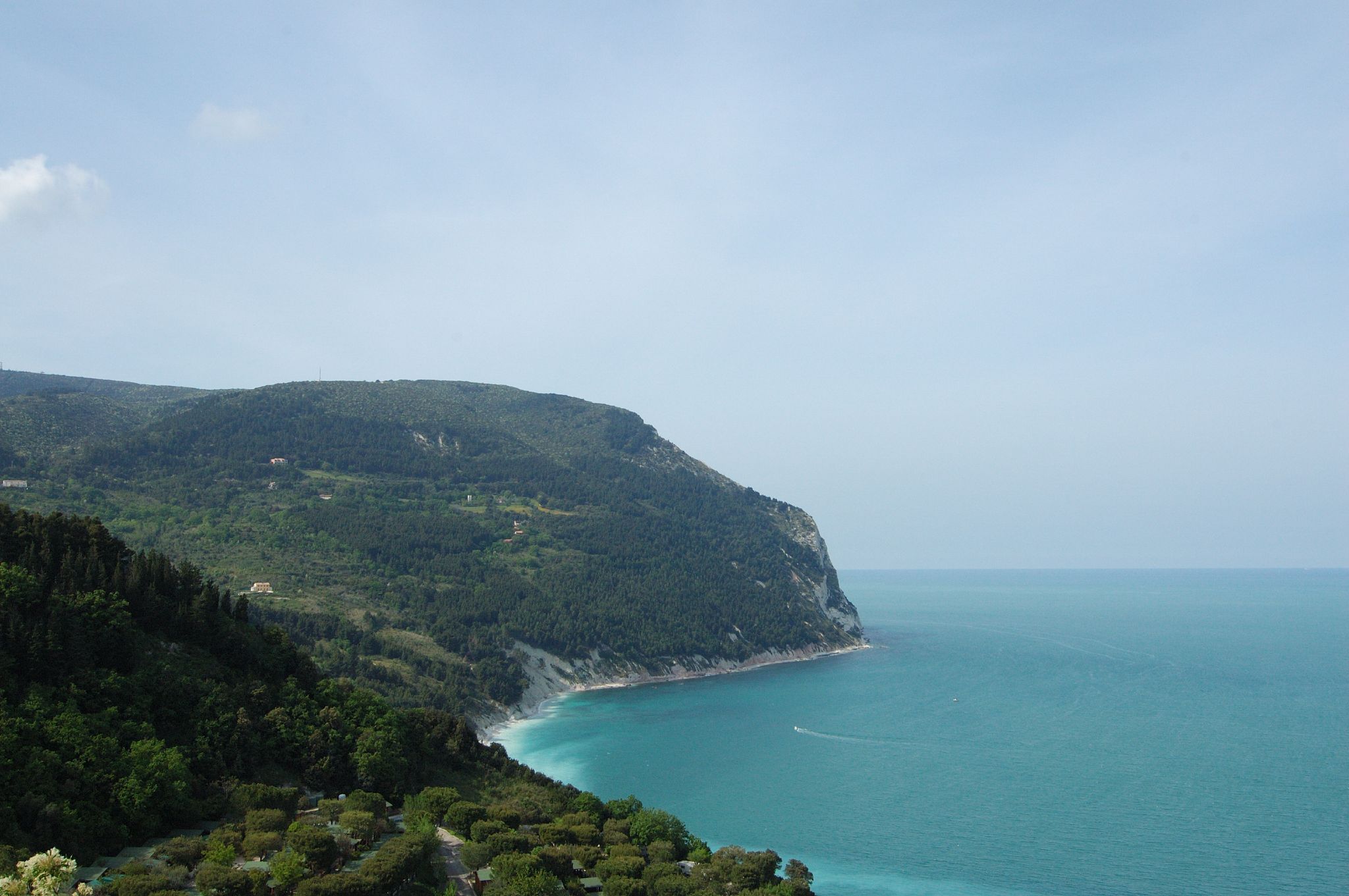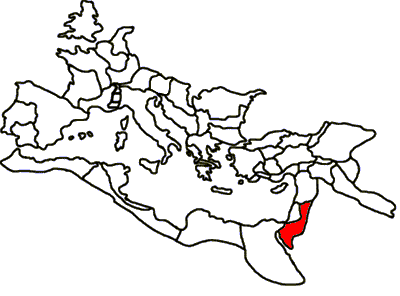|
Hyrcanus II
John Hyrcanus II (, ''Yohanan Hurqanos''; died 30 BCE), a member of the Hasmonean dynasty, was for a long time the Jewish High Priest in the 1st century BCE. He was also briefly King of Judea 67–66 BCE and then the ethnarch (ruler) of Judea, probably over the period 47–40 BCE. Accession Hyrcanus was the eldest son of Alexander Jannaeus, King and High Priest, and Alexandra Salome. After the death of Alexander in 76 BCE, his widow succeeded to the rule of Judea and installed her elder son Hyrcanus as High Priest. Alexander had numerous conflicts with the Pharisees. However, Hyrcanus was supported by the Pharisees, especially later in his tenure. When Salome died in 67 BCE, she named Hyrcanus as her successor as ruler of Judea as well, but soon he and his younger brother, Aristobulus II, began fighting over who had the right to the throne. Deposition Hyrcanus had scarcely reigned three months when Aristobulus II rose in rebellion. Hyrcanus advanced against him at ... [...More Info...] [...Related Items...] OR: [Wikipedia] [Google] [Baidu] |
Guillaume Rouillé
Guillaume Rouillé ( la, Gulielmus Rovillium; 15181589), also called Roville or Rovillius, was one of the most prominent humanist bookseller-printers in 16th-century Lyon. He invented the pocket book format called the ''sextodecimo'', printed with sixteen leaves to the folio sheet, half the size of the octavo format, and published many works of history and poetry as well as medicine, in addition to his useful compilations and handbooks. Rouillé was born in Tours. Though he was a Frenchman, he served his apprenticeship in the Venetian printing-house of Gabriele Giolito de' Ferrari, and retained his connections with Venice as a source of texts after his arrival in Lyon around 1543. Among his works was the French translation by Barthélemy Aneau of Andrea Alciato's pioneering emblem book, which formed part of a major publishing venture in Lyons by the team of Guillaume Rouillé and his printer Macé Bonhomme, 1549, which extended to translations in Italian and Spanish. Rouillé al ... [...More Info...] [...Related Items...] OR: [Wikipedia] [Google] [Baidu] |
Antiquities Of The Jews
''Antiquities of the Jews'' ( la, Antiquitates Iudaicae; el, Ἰουδαϊκὴ ἀρχαιολογία, ''Ioudaikē archaiologia'') is a 20-volume historiographical work, written in Greek, by historian Flavius Josephus in the 13th year of the reign of Roman emperor Flavius Domitian which was around AD 93 or 94.Freedman, David Noel, ed., ''The Anchor Bible Dictionary'', (New York: Doubleday, 1997, 1992). ''Antiquities of the Jews'' contains an account of the history of the Jewish people for Josephus' gentile patrons. In the first ten volumes, Josephus follows the events of the Hebrew Bible beginning with the creation of Adam and Eve. The second ten volumes continues the history of the Jewish people beyond the biblical text and up to the Jewish War, or the First Jewish–Roman War, 66 to 73 CE. This work, along with Josephus's other major work, ''The Jewish War'' (''De Bello Iudaico''), provides valuable background material for historians wishing to understand 1st-century AD Jud ... [...More Info...] [...Related Items...] OR: [Wikipedia] [Google] [Baidu] |
Kingdom Of Pontus
Pontus ( grc-gre, Πόντος ) was a Hellenistic kingdom centered in the historical region of Pontus and ruled by the Mithridatic dynasty (of Persian origin), which possibly may have been directly related to Darius the Great of the Achaemenid dynasty. The kingdom was proclaimed by Mithridates I in 281BC and lasted until its conquest by the Roman Republic in 63BC. The Kingdom of Pontus reached its largest extent under Mithridates VI the Great, who conquered Colchis, Cappadocia, Bithynia, the Greek colonies of the Tauric Chersonesos, and for a brief time the Roman province of Asia. After a long struggle with Rome in the Mithridatic Wars, Pontus was defeated. The western part of it was incorporated into the Roman Republic as the province Bithynia et Pontus; the eastern half survived as a client kingdom until 62 AD. As the greater part of the kingdom lay within the region of Cappadocia, which in early ages extended from the borders of Cilicia to the Euxine (Black Sea), the king ... [...More Info...] [...Related Items...] OR: [Wikipedia] [Google] [Baidu] |
Pompey
Gnaeus Pompeius Magnus (; 29 September 106 BC – 28 September 48 BC), known in English as Pompey or Pompey the Great, was a leading Roman general and statesman. He played a significant role in the transformation of Rome from republic to empire. He was (for a time) a student of Roman general Sulla as well as the political ally, and later enemy, of Julius Caesar. A member of the senatorial nobility, Pompey entered into a military career while still young. He rose to prominence serving the dictator Sulla as a commander in the civil war of 83–82 BC. Pompey's success as a general while young enabled him to advance directly to his first Roman consulship without following the traditional '' cursus honorum'' (the required steps to advance in a political career). He was elected as Roman consul on three occasions. He celebrated three Roman triumphs, served as a commander in the Sertorian War, the Third Servile War, the Third Mithridatic War, and in va ... [...More Info...] [...Related Items...] OR: [Wikipedia] [Google] [Baidu] |
Judea Na Pompeius
Judea or Judaea ( or ; from he, יהודה, Standard ''Yəhūda'', Tiberian ''Yehūḏā''; el, Ἰουδαία, ; la, Iūdaea) is an ancient, historic, Biblical Hebrew, contemporaneous Latin, and the modern-day name of the mountainous southern part of the modern States of Palestine and Israel. The name originates from the Hebrew name Yehudah, a son of the biblical patriarch Jacob/Israel, with Yehudah's progeny forming the biblical Israelite tribe of Judah (Yehudah) and later the associated Kingdom of Judah. Related nomenclature continued to be used by the Babylonians, Persian, Hellenistic, and Roman periods as the Babylonian and Persian Yehud, Hasmonean Kingdom of Judea, and consequently Herodian and Roman Judea, respectively. Under Hasmonean, Herodian and Roman rule, the term was applied to an area larger than the historical region of Judea. In 132 AD, the province of Judaea was merged with Galilee into an enlarged province named Syria Palaestina. The term ... [...More Info...] [...Related Items...] OR: [Wikipedia] [Google] [Baidu] |
Ancient Drachma
In ancient Greece, the drachma ( el, δραχμή, drachmḗ, ; pl. drachmae or drachmas) was an ancient currency unit issued by many city-states during a period of ten centuries, from the Archaic period throughout the Classical period, the Hellenistic period up to the Roman period. The ancient drachma originated in the Greece around the 6th century BC. The coin, usually made of silver or sometimes gold had its origins in a bartering system that referred to a drachma as a handful of wooden spits or arrows. The drachma was unique to each city state that minted them, and were sometimes circulated all over the Mediterranean. The coinage of Athens was considered to be the strongest and became the most popular. Origins The name ''drachma'' is derived from the verb (, "(I) grasp"). It is believed that the same word with the meaning of "handful" or "handle" is found in Linear B tablets of the Mycenean Pylos. Initially a drachma was a fistful (a "grasp") of six ''oboloí'' or ... [...More Info...] [...Related Items...] OR: [Wikipedia] [Google] [Baidu] |
Honi Ha-Magel
Honi HaMe'agel (חוני המעגל Khoni, Choni, or Ḥoni; lit. Honi the Circle-drawer) was a Jewish scholar of the 1st-century BCE, during the age of the ''tannaim'', the scholars from whose teachings the Mishnah was derived. During the 1st century BC, a variety of religious movements and splinter groups developed amongst the Jews in Judea. A number of individuals claimed to be miracle workers in the tradition of Elijah and Elisha, the ancient Jewish prophets. The Babylonian Talmud, and the Jerusalem Talmud both provide some examples of such Jewish miracle workers, including Honi. Circle drawing incident His surname is derived from an incident in which, according to the Babylonian Talmud, his prayer for rain was miraculously answered. On one occasion, when God did not send rain well into the winter (in Israel, it rains mainly in the winter), Honi drew a circle in the dust, stood inside it, and informed God that he would not move until it rained. When it began to drizzle, Hon ... [...More Info...] [...Related Items...] OR: [Wikipedia] [Google] [Baidu] |
Nabataeans
The Nabataeans or Nabateans (; Nabataean Aramaic: , , vocalized as ; Arabic language, Arabic: , , singular , ; compare grc, Ναβαταῖος, translit=Nabataîos; la, Nabataeus) were an ancient Arab people who inhabited northern Arabian Peninsula, Arabia and the southern Levant. Their settlements—most prominently the assumed capital city of Petra, Raqmu (present-day Petra, Jordan)—gave the name ''Nabatene'' ( grc, Ναβατηνή, translit=Nabatēnḗ) to the Arabian borderland that stretched from the Euphrates to the Red Sea. The Nabateans emerged as a distinct civilization and political entity between the 4th and 2nd centuries BCE,Taylor, Jane (2001). ''Petra and the Lost Kingdom of the Nabataeans''. London: I.B.Tauris. pp. 14, 17, 30, 31. . Retrieved 8 July 2016. with Nabataean Kingdom, their kingdom centered around a loosely controlled trading network that brought considerable wealth and influence across the ancient world. Described as fiercely independent by cont ... [...More Info...] [...Related Items...] OR: [Wikipedia] [Google] [Baidu] |
Aretas III
Aretas III (; Nabataean Aramaic: ''Ḥārīṯat''; Ancient Greek: ) was king of the Nabataean kingdom from 87 to 62 BCE. Aretas ascended to the throne upon the death of his brother, Obodas I, in 87 BCE. During his reign, he extended his kingdom to cover what now forms the northern area of Jordan, the south of Syria, and part of Saudi Arabia. Probably the greatest of Aretas' conquests was that of Damascus, which secured his country's place as a serious political power of its time. Nabataea reached its greatest territorial extent under Aretas' leadership. Conquest of Damascus Damascus straddled the primary commercial route from the Mediterranean Sea to India and the Middle East. The city was taken from the loosening grip of the Seleucid Empire in 85 BCE by Aretas, who styled himself as Aretas Philhellen (''Philhellen'', "friend of the Greeks"). He ordered the mints of Damascus to produce the first silver Nabataean coins, in a Hellenic style and lettering his name in the Greek ... [...More Info...] [...Related Items...] OR: [Wikipedia] [Google] [Baidu] |
Antipater The Idumean
Antipater I the Idumaean, he, ''‘Ānṭīpāṭrūs'' (born 113 or 114 BCE, died 43 BCE) was the founder of the Herodian Dynasty and father of Herod the Great. According to Josephus, he was the son of Antipas; Hebrew: אנטיפס) and had formerly held that name. A native of Idumaea, a region southeast of Judah in which the Edomites settled during the classical period, Antipater became a powerful official under the later Hasmonean kings and subsequently became a client of the Roman general Pompey the Great when Pompey conquered Judah in the name of Roman Republic. When Julius Caesar defeated Pompey, Antipater rescued Caesar in Alexandria, and was made chief minister of Judea, as Judah became known to the Romans, with the right to collect taxes. Antipater eventually made his sons Phasaelus and Herod the governors of Jerusalem and Galilee, respectively. After the assassination of Caesar, Antipater was forced to side with Gaius Cassius Longinus against Mark Antony. The pro- ... [...More Info...] [...Related Items...] OR: [Wikipedia] [Google] [Baidu] |
Schürer
Schürer is a German surname. Notable people with the surname include: * Emil Schürer (1844–1910), German Protestant theologian * Johann Georg Schürer Johann Georg Schürer (1720 – 16 February 1786) was a German baroque composer. He was born in Bohemia, and died in Dresden, aged about 65. Operas * ''Astrea placata ovvero La felicità della terra,'' (libretto Biaggio Campagnari), 7 October ... ( 1720–1786), Bohemian-German composer See also * 2429 Schürer, main-belt asteroid {{DEFAULTSORT:Schuerer German-language surnames ... [...More Info...] [...Related Items...] OR: [Wikipedia] [Google] [Baidu] |
Temple Of Jerusalem
The Temple in Jerusalem, or alternatively the Holy Temple (; , ), refers to the two now-destroyed religious structures that served as the central places of worship for Israelites and Jews on the modern-day Temple Mount in the Old City of Jerusalem. According to the Hebrew Bible, the First Temple was built in the 10th century BCE, during the reign of Solomon over the United Kingdom of Israel. It stood until , when it was destroyed during the Babylonian siege of Jerusalem. Almost a century later, the First Temple was replaced by the Second Temple, which was built after the Neo-Babylonian Empire was conquered by the Achaemenid Persian Empire. While the Second Temple stood for a longer period of time than the First Temple, it was likewise destroyed during the Roman siege of Jerusalem in 70 CE. Projects to build the hypothetical "Third Temple" have not come to fruition in the modern era, though the Temple in Jerusalem still features prominently in Judaism. Today, the Temple Mount i ... [...More Info...] [...Related Items...] OR: [Wikipedia] [Google] [Baidu] |








